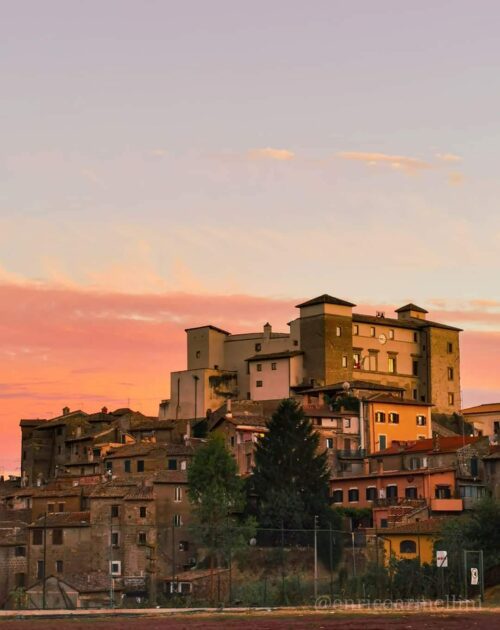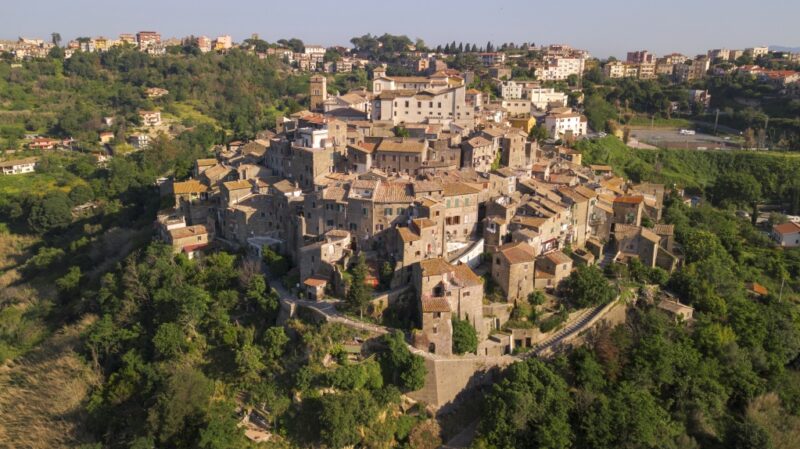Perhaps the village was born before the year 1000, but what is certain is that in 2021 it became one of the `I Borghi più Belli d’Italia‘ , the 23rd in Lazio. From the top of a tuff hill between two valleys furrowed by the Chiarano ditch and the Mola, the municipality of Castelnuovo di Porto clusters around the Rocca Colonna, in the Campagna Romana.

photo Facebook @enricoarmellini
The historical centre of Castelnuovo di Porto is decorated with heraldic coats of arms that recall the noble houses built around the Rocca Colonna. The Rocca is a 13th-century castle embellished with frescoed rooms, ancient prisons, a small medieval church and the Loggia Pinta, frescoed by Federico Zuccari with scenes of the foundation of Rome, Roman legends, battles, ports and possessions of the rich family.

Walking further through the historical centre of this medieval village, we come across the Collegiata di Santa Maria Assunta. This Baroque church was built in 1200 on an older structure of which the bell tower remains. The Trittico del Salvatore (Triptych of the Saviour), a work by Antoniazzo Romano from 1500, is kept in the Cappella Degli Effetti.
Along the route of the ancient Campana Vetus, there is the small medieval church of San Sebastiano with its frescoed chapel.
In the Veio Park surrounding Castelnuovo di Porto, numerous archaeological finds have been unearthed from the Etruscan-Capenate necropolises of Belmonte, Monte Fiore and Vaccareccia. Among the archaeological finds are Latin inscriptions, friezes and marble heads. A vast rock necropolis and the ruins of the medieval village with its 13th century tower are preserved in Belmonte.
The Valle Vasca ditch, on the other hand, preserves a rare complex of vats for crushing grapes dating back to the early Middle Ages.

At the patron saint’s festival of Sant’Antonino on 2 September, you can taste local specialities such as gnocchi, corn polenta and Ciambelle dei Santi!
